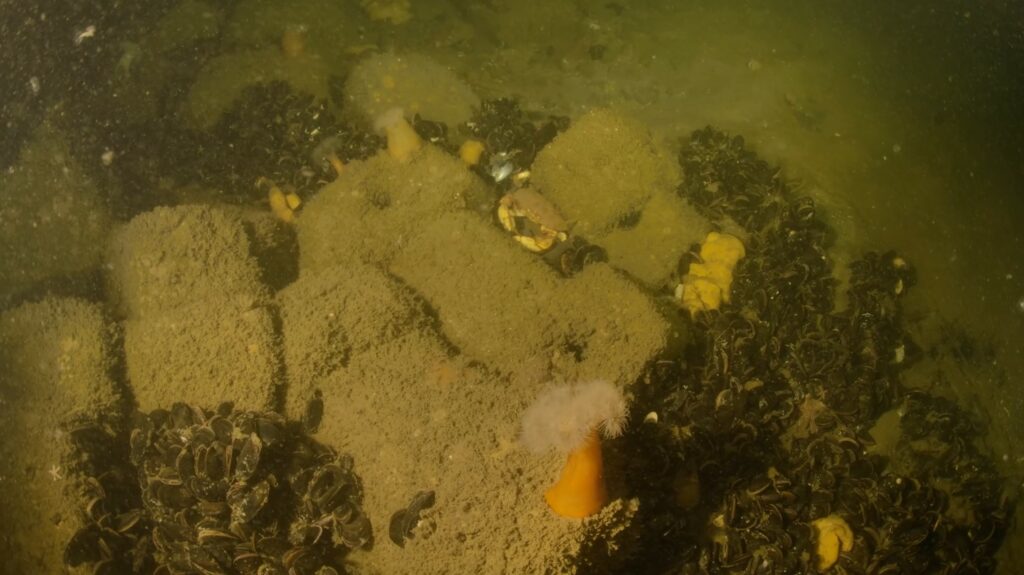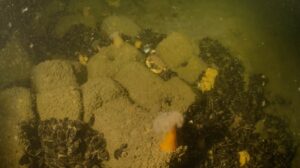In 2022, ECOncrete deployed over 4,000 scour protection units and rock material (control) for comparison at Twelve Mile Reef, an offshore test site in Long Island, New York in coordination with the New York State Department of Environmental Conservation. Manufactured locally, the scour protection system was deployed following standard offshore installation procedures.
The project, supported by the New York State Energy Research and Development Authority (NYSERDA), evaluates the effects of ecologically engineered scour protection on benthic habitats and fish populations compared to traditional scour protection. The goal is to examine biological growth within the scour protection system and surrounding seabed, focusing on changes in species populations and fish diversity using Environmental DNA (eDNA) analysis, high-resolution multibeam mapping, and finfish habitat and community modeling.
This project was executed by ECOncrete in partnership with Stony Brook University with funding support from NYSERDA.




